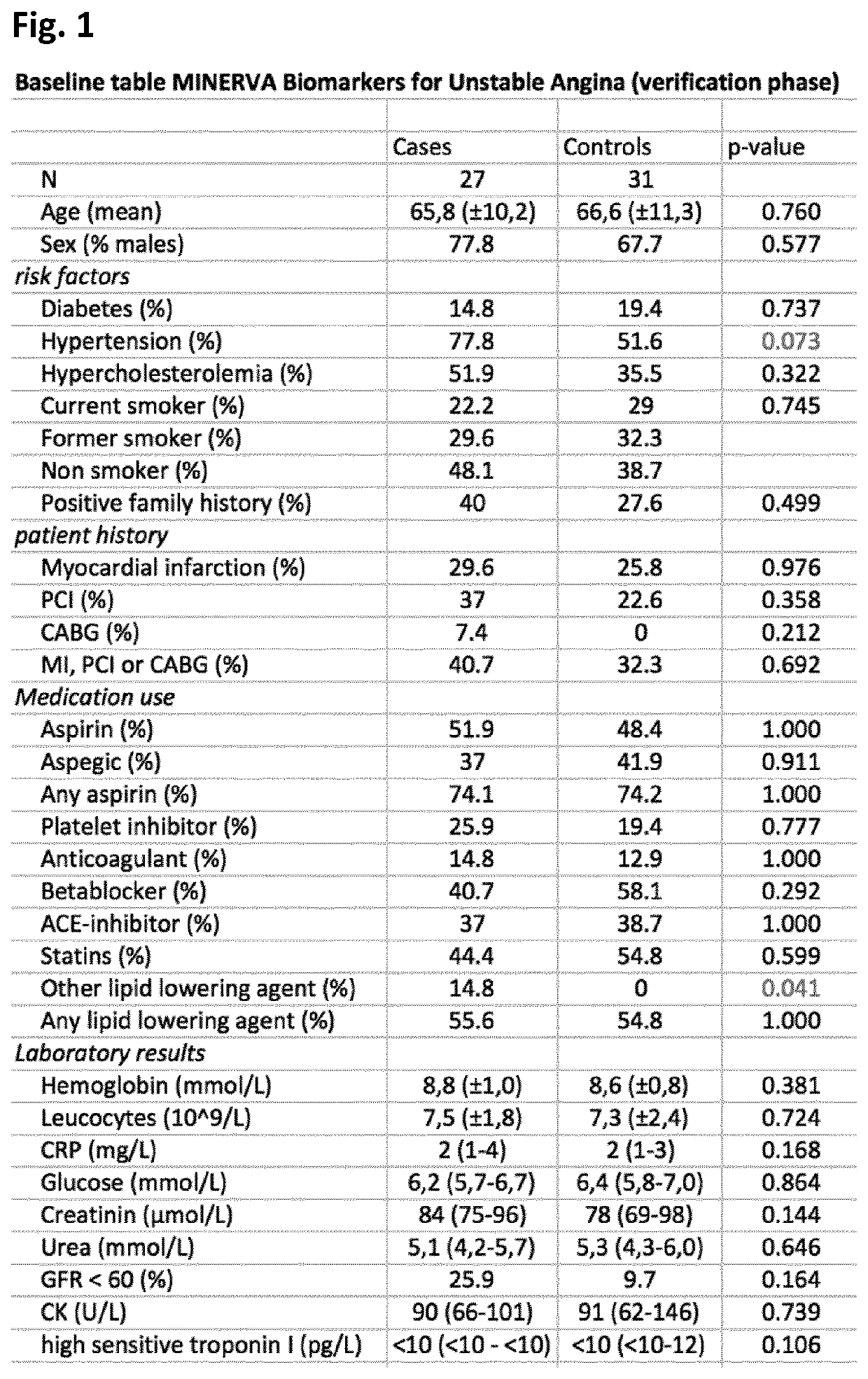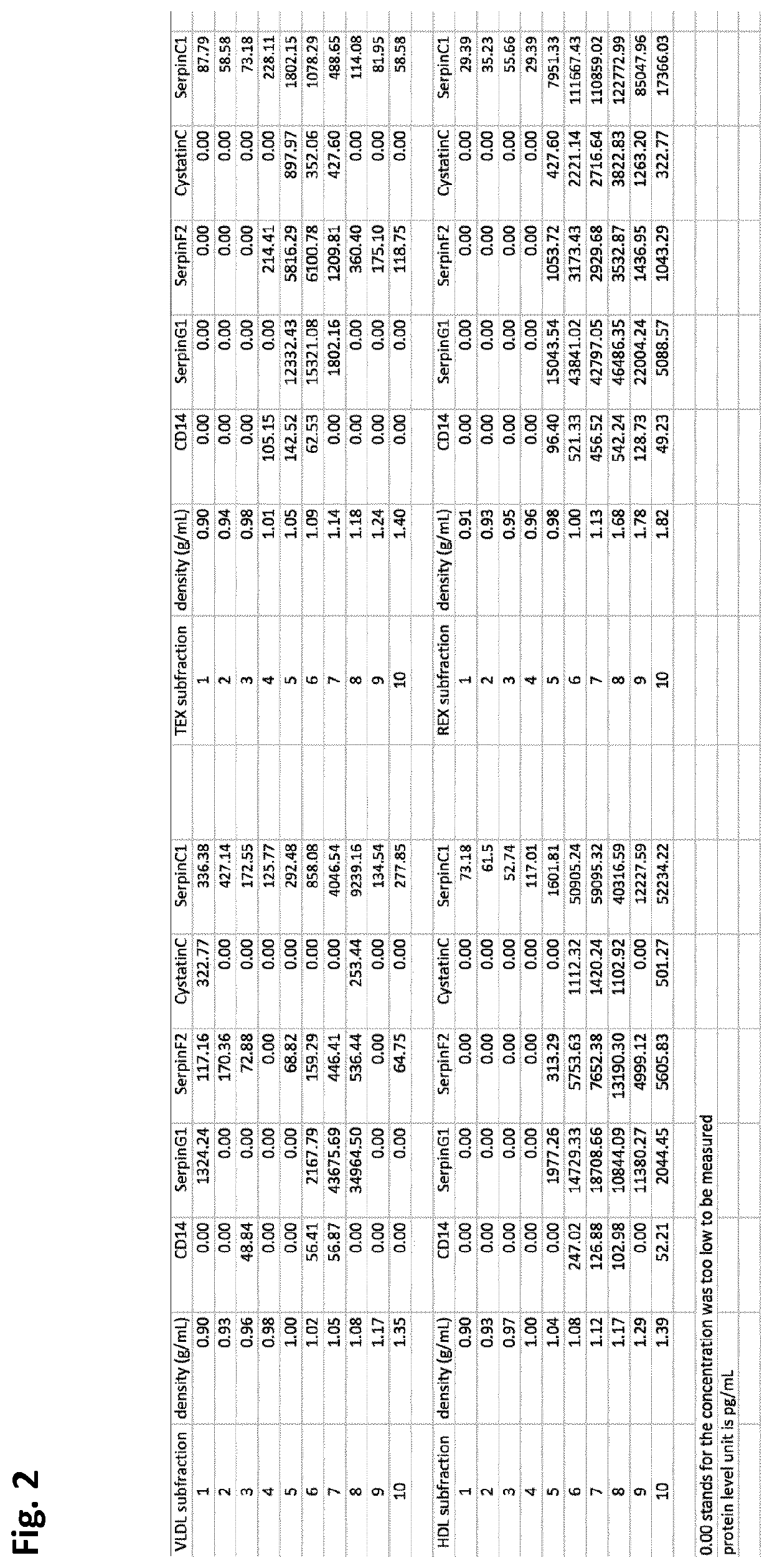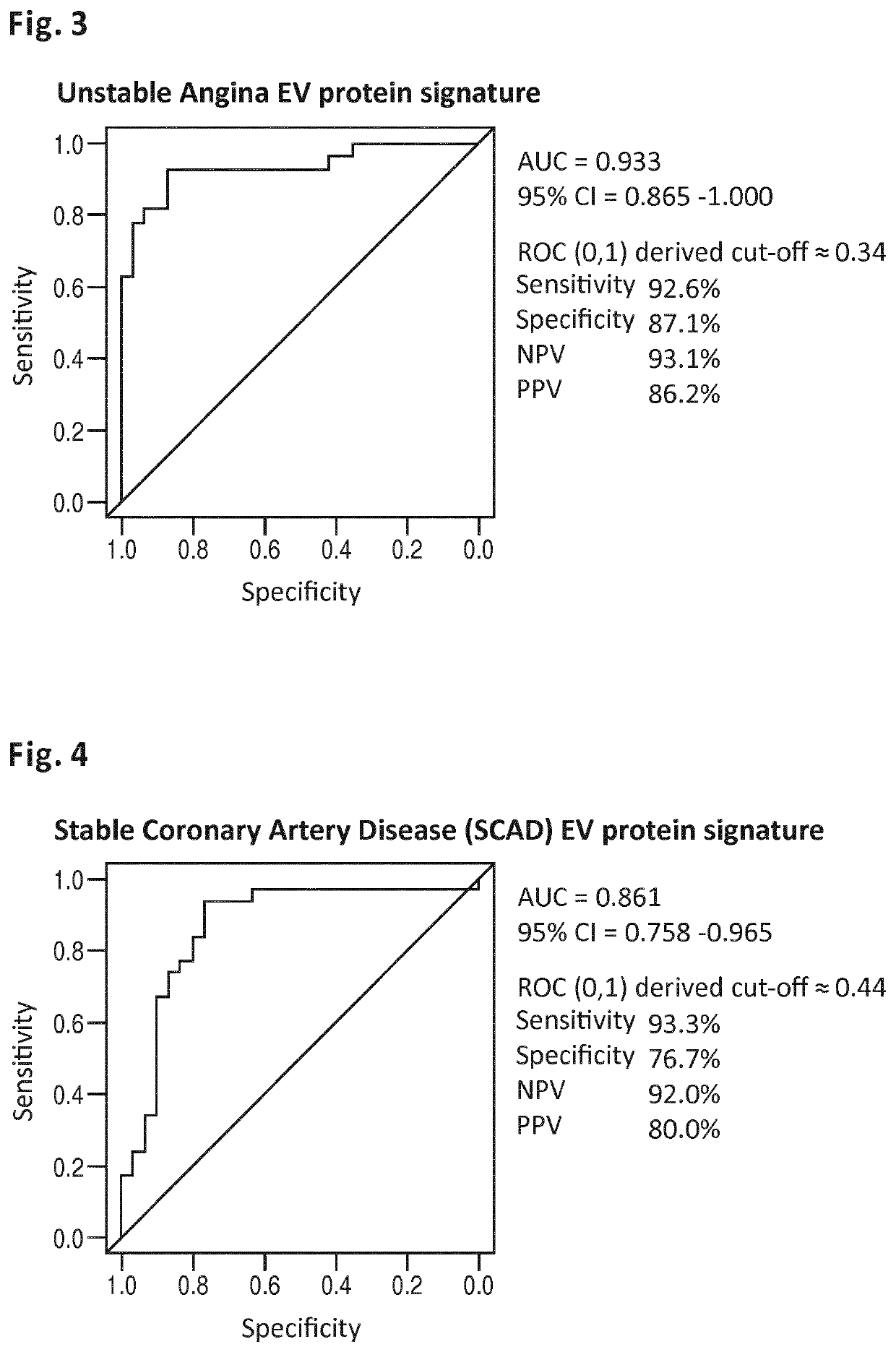Extracellular vesicle markers for stable angina and unstable angina
a technology of extracellular vesicle markers and stable angina, applied in the field of medicine, can solve the problems of ischemic heart disease, a major cause of morbidity and mortality worldwide, atypical symptoms, and shortness of breath
- Summary
- Abstract
- Description
- Claims
- Application Information
AI Technical Summary
Benefits of technology
Problems solved by technology
Method used
Image
Examples
example 1
Study on Minerva Unstable Angina Cohort
[0183]The MINERVA study (abbreviation for determination of Microvesicle content IN the Emergency Room: diagnostic Value for Acute coronary syndromes) is a single center, prospective cohort study of patients presenting to the emergency department within 24 hours of the onset of chest pain suggestive of acute coronary syndrome (ACS). Between January 2012 and June 2014, over 2000 consecutive patients were enrolled in the Meander Medical Center Amersfoort, the Netherlands, which is a large regional teaching hospital providing healthcare for a population of ˜300,000 patients. Patients younger than 18 years, patients who were unable or unwilling to give their informed consent and patients with a clear-cut ST-segment elevation MI (STEMI) were not included in this study. All patients were evaluated and managed according to the international guidelines. Along with the routine clinical laboratory measurements directly upon presentation, additional 3×10 c...
example 2
Stable Angina Cohort
[0202]The MYOMARKER stable coronary artery disease cohort (abbreviation for MYOcardial ischemia detection by circulating bioMARKERs) is a single center, prospective cohort study of patients, who are evaluated in the Meander Medical Center Cardiology outpatient clinic for (recent onset) suspected symptomatic coronary artery disease, undergoing radionuclide myocardial perfusion imaging (rMPI) as indicated by their own cardiologist. Ahead of rMPI, venous blood (6×10 cc) is obtained from the peripheral intravenous cannula, which is inserted as part of standard preparation for rMPI. The plasma component is frozen and stored at −80° C. within 1 hour after sample collection. All patients are evaluated and managed according to the international guidelines, by their own cardiologist. Patient enrollment started in August 2014 and continues until at least 1250 patients are participating in the study. At the filing of the present application (November 2015) over 800 patients...
example 3
ion of Proteins Associated with Extracellular Vesicles
[0207]In order to determine if the five proteins selected were present in or on extracellular vesicles (EV), density gradient ultracentrifugation was performed. VLDL-EV, HDL-EV, REX-EV and TEX-EV fractions were isolated from 8 mL plasma as mentioned under example 1. Each of the precipitates (LDL, HDL, REX, TEX) was re-suspended in 500 μl PBS and used for the density gradient centrifugation. In order to make the density gradient buffer, 5 solutions containing different concentrations of OptiPrep™ medium (OptiPrep, Axis-shiled #1114542) were prepared with 10×PBS pH 7.4 (Ambion®, Life Technologies # AM9265) and ddH2O. The working solutions comprised 5%, 10%, 20%, 30% and 40% OptiPrep and 1×PBS respectively. The solutions were added and overlaid into the ultracentrifuge tubes (Beckman Coulter #344059) sequentially from the highest density one (with the highest concentration of OptiPrep) to the lowest density one (with the lowest conc...
PUM
 Login to View More
Login to View More Abstract
Description
Claims
Application Information
 Login to View More
Login to View More - R&D
- Intellectual Property
- Life Sciences
- Materials
- Tech Scout
- Unparalleled Data Quality
- Higher Quality Content
- 60% Fewer Hallucinations
Browse by: Latest US Patents, China's latest patents, Technical Efficacy Thesaurus, Application Domain, Technology Topic, Popular Technical Reports.
© 2025 PatSnap. All rights reserved.Legal|Privacy policy|Modern Slavery Act Transparency Statement|Sitemap|About US| Contact US: help@patsnap.com



